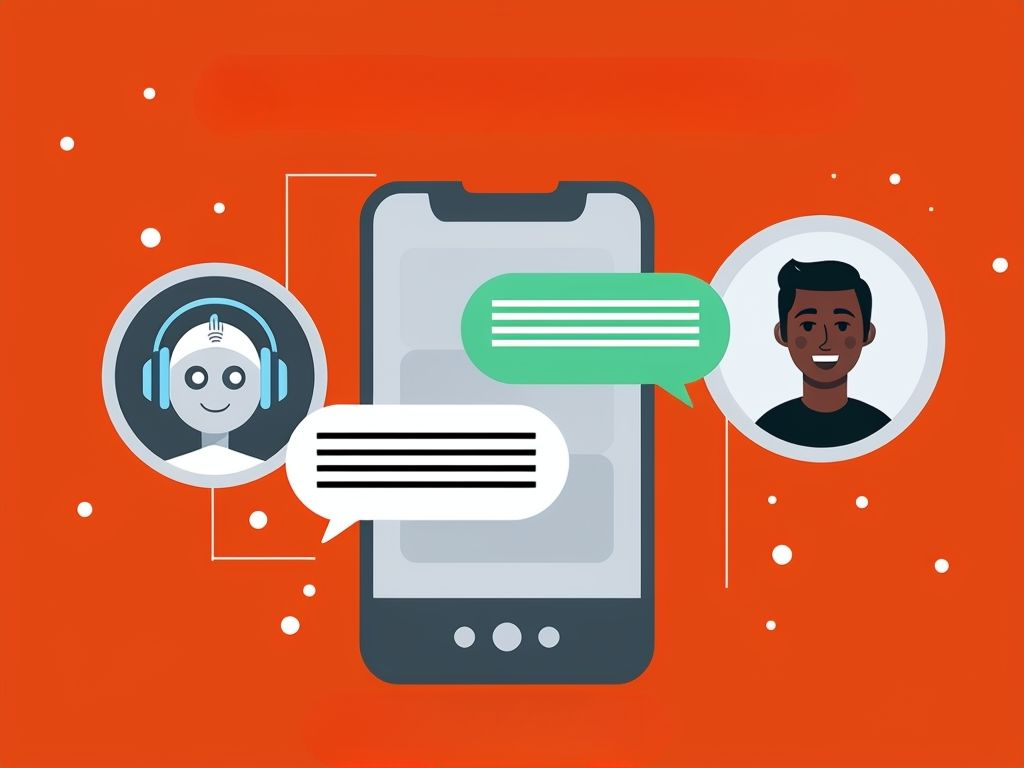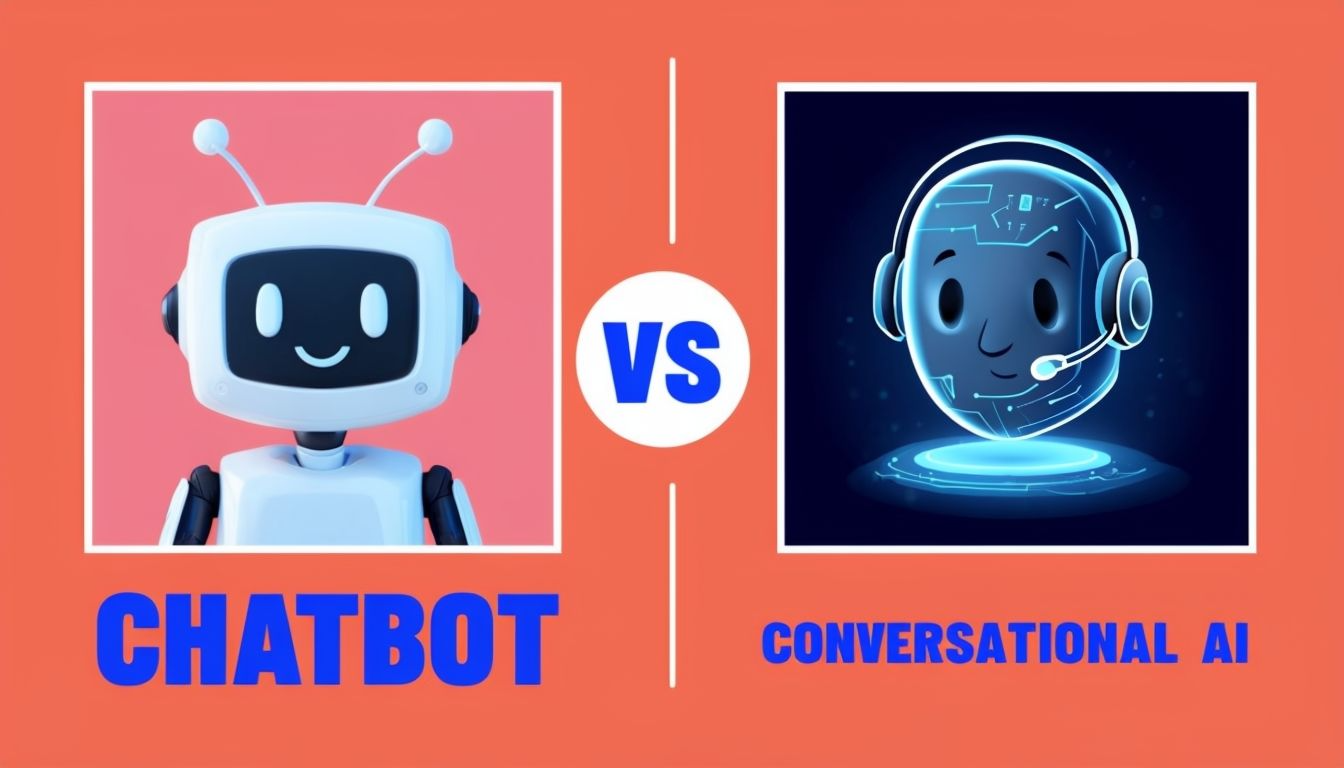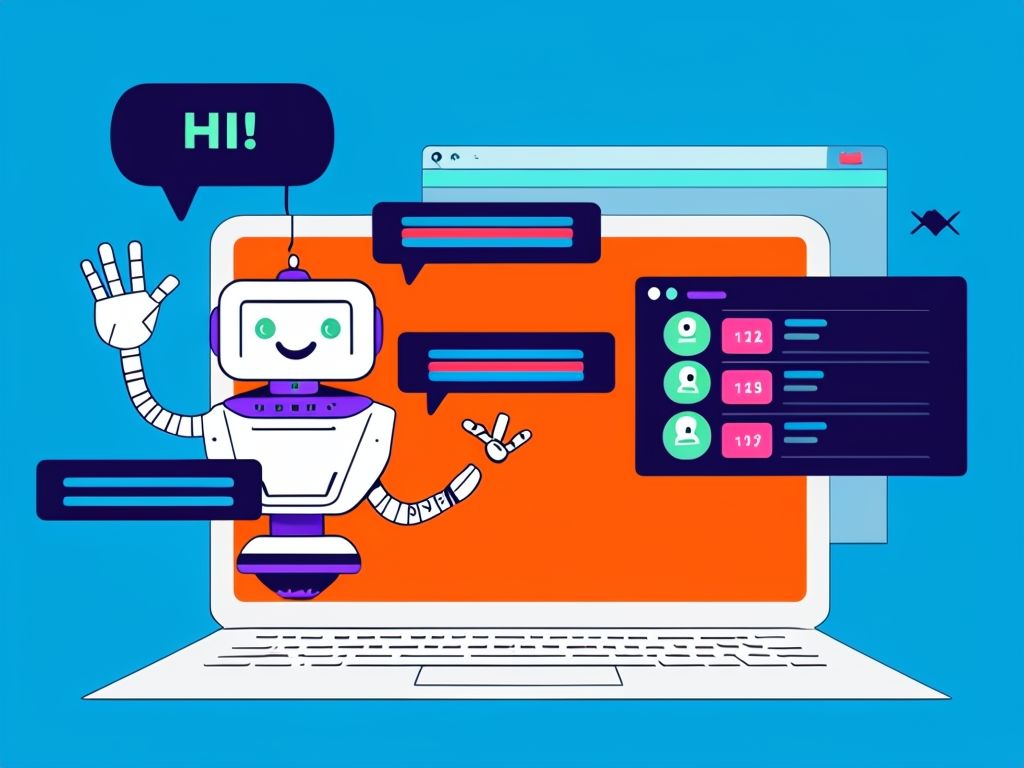Improving Customer Support with Conversational AI Chatbots
In today’s fast-paced, customer-centric world, delivering prompt and personalized support isn’t just a bonus—it’s a necessity. Conversational AI chatbots have emerged as a game-changer, bridging the gap between automation and human interaction. These intelligent systems empower businesses to meet customer demands 24/7 while optimizing resources and reducing operational costs.
In this blog post, we’ll explore what conversational AI chatbots are, how they revolutionize customer support, and why they’ve become essential in today’s business landscape. From their key features to real-world applications, we’ll help you understand their impact. If you’re considering adopting conversational AI to enhance your customer support, this post has everything you need to get started. Let’s dive in!
What is Conversational AI for Customer Support?
Conversational AI chatbots are advanced software applications designed to simulate human-like interactions. Leveraging natural language processing (NLP), machine learning (ML), and contextual understanding, they can:
- Interpret customer queries in real-time.
- Provide accurate and personalized responses.
- Learn and improve over time based on interactions.
Unlike traditional rule-based bots, AI-powered chatbots are dynamic, adapting to complex conversations and delivering a seamless user experience.
Key Components of Conversational AI
To understand the power of conversational AI chatbots in customer support, it’s crucial to know the building blocks that make these systems work:
- Machine Learning (ML): Improves chatbot accuracy over time by learning from interactions.
- Natural Language Processing (NLP): Enables chatbots to understand and interpret human language.
- Speech Recognition: Converts spoken words into text for voice-based interactions.
- Text-to-Speech (TTS): Generates human-like audio responses for seamless conversations.
- Integration with APIs: Connects the chatbot to databases and customer service tools like CRM.
How Do Conversational AI Chatbots Work?
Conversational AI chatbots operate by leveraging a combination of artificial intelligence (AI) technologies to simulate human-like interactions. Unlike traditional chatbots, which rely on predefined scripts and decision trees, conversational AI chatbots are powered by adaptive algorithms that enable them to understand, learn, and respond in real-time.
Here’s a breakdown of how conversational AI chatbots work:
1. Input Processing
When a user interacts with a chatbot, the system processes the input to understand the user’s intent. This is achieved through:
- Text-based Input: Using Natural Language Processing (NLP) to analyze the text and extract meaning.
- Voice-based Input: Using Automatic Speech Recognition (ASR) to convert spoken language into text for further processing.
2. Intent Recognition and Context Understanding
The chatbot uses machine learning models to determine the user’s intent and maintain the context of the conversation. For instance:
- If a user asks, “Where is my order?” the chatbot identifies the intent as a shipment inquiry.
- Context tracking ensures that follow-up questions, such as “Can I change the address?” remain tied to the ongoing discussion.
3. Response Generation
Once the intent is identified, the chatbot generates a response using one of these methods:
- Rule-Based Responses: Predefined answers for common queries.
- Dynamic Responses: Generated using Natural Language Generation (NLG) for more personalized replies.
4. Continuous Learning
Conversational AI chatbots improve over time by analyzing user interactions and learning from errors. This is achieved through:
- Supervised Learning: Feedback from customer service teams helps fine-tune responses.
Unsupervised Learning: AI identifies patterns in data to enhance understanding.

How is AI Used in Customer Support?
Artificial intelligence (AI) is revolutionizing the way businesses manage customer interactions. By integrating AI-driven tools, companies can enhance efficiency, reduce response times, and provide personalized support experiences. From automating routine tasks to delivering insightful analytics, AI has become an indispensable component of modern customer support strategies.
1. Automating Routine Tasks
One of AI's most impactful contributions to customer support is its ability to handle repetitive and time-consuming tasks. Conversational AI chatbots, for example, can:
- Answer frequently asked questions (FAQs) such as store hours or refund policies.
- Process basic requests like order tracking or password resets.
- Redirect complex queries to human agents, ensuring efficient workload distribution.
Fact: According to a report by Gartner, by 2025, 80% of customer interactions will be managed without a human agent.
2. Offering Personalized Experiences
AI enables businesses to create highly tailored customer interactions by analyzing data such as:
- Purchase history
- Browsing behavior
- Previous interactions
For example, when a returning customer inquires about a product, the chatbot can reference past purchases to suggest complementary items or services. This level of personalization fosters stronger customer relationships and enhances satisfaction.
3. Enhancing Multichannel Support
AI-powered solutions ensure seamless customer experiences across multiple communication channels, including:
- Live chat
- Social media platforms
- Voice assistants
With omnichannel support, customers can start a conversation on one platform and continue it on another without losing context.
4. Providing Real-Time Insights and Analytics
AI tools analyze large volumes of customer interaction data to identify trends and opportunities for improvement. Insights from AI can help:
- Measure customer sentiment.
- Identify frequently recurring issues.
- Improve training for human agents by highlighting areas where support lags.
5. Supporting Human Agents
AI doesn’t replace human agents—it complements them. By acting as an assistant, AI can:
- Provide instant access to knowledge bases during customer calls.
- Suggest optimal solutions for resolving customer issues.
- Handle initial inquiries, allowing human agents to focus on complex problems.
How Can AI Be Used to Improve Customer Experience?
AI technologies, particularly conversational AI chatbots, are reshaping how businesses interact with their customers. By providing instant, personalized, and consistent support, AI improves the overall customer journey, from initial engagement to issue resolution.
1. Delivering Instant Responses
One of the most significant frustrations for customers is waiting for assistance. AI chatbots eliminate this problem by offering immediate responses to inquiries, regardless of the time or volume of requests.
2. Offering Personalized Recommendations
AI analyzes customer behavior and preferences to deliver customized recommendations. This level of personalization enhances the shopping and service experience.
- E-Commerce Example: An AI chatbot suggests products based on a user’s browsing history.
- Streaming Services: Platforms like Netflix use AI to recommend shows based on viewing habits.
3. Ensuring Consistency Across Interactions
AI chatbots maintain a uniform tone and approach, ensuring that customers receive consistent experiences. Unlike human agents, who may vary in style or knowledge, AI operates with a standardized knowledge base.
4. Enabling 24/7 Availability
AI-driven solutions ensure customers have access to support anytime, anywhere. This is particularly useful for global businesses with customers across different time zones.
Fact: According to a study by Salesforce, 89% of customers feel more loyal to brands that offer 24/7 support.
5. Anticipating Customer Needs
By analyzing historical data, AI can predict customer needs and preemptively address potential issues. For example:
- Sending reminders for upcoming appointments.
- Notifying customers of potential delays in services or products.
6. Supporting Multilingual Communication
AI-powered chatbots can communicate in multiple languages, breaking down barriers for international customers. This feature not only improves accessibility but also fosters inclusivity.

What is the Difference Between a Chatbot and Conversational AI?
While the terms "chatbot" and "conversational AI" are often used interchangeably, they refer to distinct technologies with varying capabilities. Knowing the differences helps businesses choose the right solution for their customer support needs.
1. Basic Chatbots: Rule-Based Automation
Traditional chatbots are rule-based systems designed to respond to predefined inputs. They operate using decision trees and are limited to programmed responses.
- How They Work: Basic chatbots follow a script. If a user asks a question outside its scope, the bot fails to respond meaningfully.
- Use Case: FAQs, simple booking processes, and standard inquiries.
2. Conversational AI: Contextual Understanding
Conversational AI leverages advanced technologies like natural language processing (NLP), machine learning, and context awareness to engage in dynamic, human-like conversations.
- How It Works: Conversational AI learns from data and adapts its responses based on context, sentiment, and user intent.
- Use Case: Complex customer support, troubleshooting, and personalized assistance.
3. The Evolution of Customer Support Tools
As customer expectations grow, businesses are transitioning from basic chatbots to conversational AI to deliver better experiences.
Stat: According to Gartner, 70% of customer interactions will involve emerging technologies like conversational AI by 2025.
4. Seamless Integration and Scalability
Unlike traditional chatbots, conversational AI integrates with existing systems, such as CRMs, payment gateways, and appointment schedulers, for seamless interactions.
Real-World Scenario:
- A conversational AI chatbot integrated with a CRM can:
- Retrieve past customer interaction data.
- Offer personalized resolutions.
- Upsell or cross-sell products based on purchase history.
Examples of Conversational AI in Customer Support
Conversational AI is revolutionizing customer support by providing faster, more personalized, and efficient solutions. Below are some real-world applications of conversational AI in various industries, illustrating its transformative potential.
1. E-Commerce and Retail
Conversational AI enhances the shopping experience by guiding customers, providing product recommendations, and assisting with orders.
Use Case: Virtual Shopping Assistant
- How It Works: AI-powered chatbots help customers browse through catalogs, compare products, and check inventory availability.
- Example: An AI chatbot like Aktok can answer, “Do you have this jacket in size medium?” and suggest related items.
Key Benefits:
- Faster resolution of queries.
- Increased sales through personalized recommendations.
2. Banking and Financial Services
Banks use conversational AI to simplify complex transactions and improve customer support.
Use Case: Account Management
- How It Works: Customers can check account balances, transfer funds, or inquire about loan options via AI chatbots.
- Example: A conversational AI bot might respond to, “What’s my account balance?” and offer tips on managing savings.
Key Benefits:
- Reduced wait times.
- Secure, 24/7 assistance.
3. Healthcare
In the healthcare sector, conversational AI bridges the gap between patients and medical professionals.
Use Case: Symptom Checkers
- How It Works: AI chatbots analyze symptoms and recommend next steps, such as visiting a doctor or taking prescribed medication.
- Example: A bot like “Dr. AI” can assess, “I have a fever and headache. What should I do?”
Key Benefits:
- Improved patient engagement.
- Quick preliminary assessments.
4. Travel and Hospitality
Conversational AI improves the customer journey by automating tasks like booking and itinerary management.
Use Case: Travel Planning
- How It Works: Customers can inquire about travel options, modify bookings, or request local recommendations.
- Example: An AI assistant can answer, “Can I change my flight to tomorrow morning?” and complete the task.
Key Benefits:
- Personalized travel experiences.
- Enhanced convenience.
5. SaaS and Technology
Tech companies use conversational AI to handle onboarding, troubleshooting, and support tickets.
Use Case: Technical Support
- How It Works: AI chatbots guide users through software setup, address FAQs, and escalate unresolved issues to human agents.
- Example: A chatbot can help users configure a new CRM system, responding to queries like, “How do I import my contact list?”
Key Benefits:
- Reduced support costs.
- Improved customer satisfaction.

How to Implement Conversational AI for Customer Support
Implementing conversational AI for customer support involves a strategic approach to ensure the technology aligns with your business needs and enhances customer experiences. Below is a step-by-step guide to help you successfully integrate AI chatbots into your support framework.
Step 1: Define Objectives and Use Cases
Before deploying conversational AI, outline what you aim to achieve and identify areas where it will be most impactful.
Key Questions to Answer:
- What are the common customer pain points?
- Which tasks can be automated without losing the human touch?
- How will the chatbot complement your existing customer support team?
Examples of Use Cases:
- Resolving FAQs (e.g., order status, return policies).
- Assisting with account management.
- Providing product recommendations.
Step 2: Choose the Right Conversational AI Platform
Selecting a robust and reliable platform is critical for successful implementation.
Factors to Consider:
- Ease of Integration: Ensure the chatbot integrates seamlessly with your CRM and other tools.
- Customization Options: Choose a solution that can reflect your brand’s voice and style.
- Scalability: Opt for a platform that grows with your business.
Step 3: Train Your Chatbot with Relevant Data
A well-trained chatbot ensures accurate and meaningful interactions.
Steps to Train Your Bot:
- Collect past customer interactions and FAQs.
- Input diverse datasets to cover a broad range of scenarios.
- Continuously update the bot’s database based on new trends and customer feedback.
Pro Tip: Use AI-driven natural language processing (NLP) to enhance understanding of complex queries.
Step 4: Test Before Deployment
Testing is crucial to ensure the chatbot functions as intended.
Testing Phases:
- Alpha Testing: Internal team tests for technical bugs.
- Beta Testing: Small customer groups provide feedback on usability.
- Performance Metrics: Measure accuracy, speed, and user satisfaction.
Checklist for Testing:
- Can the bot handle unexpected questions?
- Is the bot’s tone and response consistent with your brand?
- Does it recognize when to escalate queries to human agents?
Step 5: Launch and Monitor Performance
After testing, deploy the chatbot on the desired channels (e.g., website, mobile app, messaging platforms).
Ongoing Monitoring:
- Track customer interactions to identify areas for improvement.
- Use analytics tools to measure response times, resolution rates, and customer satisfaction.
Step 6: Optimize Through Feedback and Iteration
Conversational AI is not a one-time implementation; it requires continuous improvement.
Optimization Strategies:
- Gather feedback from both customers and support agents.
- Update the AI model to include new customer queries.
- Use A/B testing to refine responses and workflows.
Step 7: Ensure Human Oversight
While AI chatbots handle routine tasks, human agents are indispensable for complex issues.
Best Practices:
- Clearly define scenarios where human intervention is necessary.
- Train support agents to collaborate with chatbots for seamless handovers.
- Highlight the availability of human agents in chatbot interfaces.
Conclusion
Improving customer support with conversational AI chatbots is not just a trend; it’s a transformative strategy that enables businesses to enhance customer experience, reduce operational costs, and scale support efforts effectively. By understanding the capabilities, benefits, and real-world applications of conversational AI, businesses can stay ahead in today’s competitive landscape.
Key Takeaways
- Definition and Functionality: Conversational AI chatbots leverage machine learning, natural language processing, and automation to deliver seamless, human-like interactions in customer support.
- Enhanced Customer Experience: With faster response times, personalized interactions, and 24/7 availability, AI chatbots significantly improve customer satisfaction.
- Cost Efficiency: Automating repetitive tasks allows businesses to optimize resources and focus human efforts on complex inquiries.
- Real-World Applications: From retail and healthcare to SaaS and IT, conversational AI is revolutionizing industries with tailored solutions.
- Future Trends: Innovations like multimodal interactions, emotional intelligence, and industry-specific solutions ensure that conversational AI continues to evolve.
We offer the perfect solution if you’re ready to elevate your customer support with conversational AI chatbots. Discover how Aktok can revolutionize your business today.

